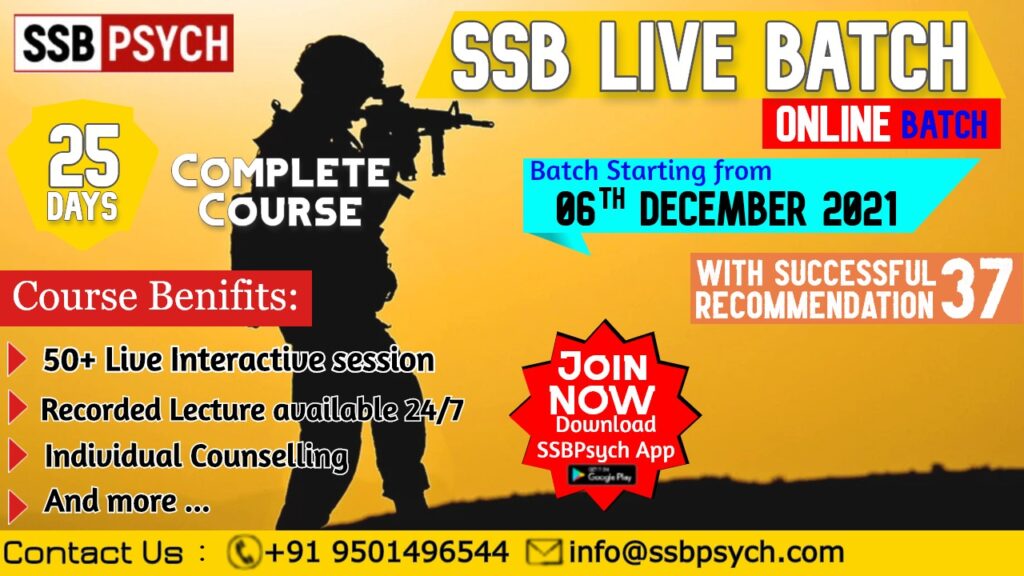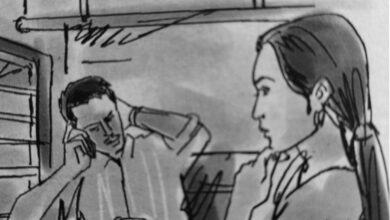
How do I clear PPDT in SSB?
With getting 37 aspirants recommended and selected in Indian armed forces in addition to my 3 recommendation helped me to find the crux for getting screen-in.
Directly coming to the point and the only key points that matter for clearing PPDT.
For solving any problem we need to divide the PPDT process.
PPDT comprises the following things :
- Filling details of the character you saw (perceive) in the picture.
- Writing the theme line of the story you are going to write.
- Writing a story in the sheet provided.
- The way you walk in a discussion room.
- Listening to other’s stories.
- The narration of your own story.
- Participation in the Group Discussion.
- Concluding the story.
- Leaving the discussion room after completion of the test.
See I consider PPDT a crucial step as after this step only I can show the qualities I possess to assessors.
I’ll speak to the point.
One must understand the difference between TAT & PPDT. Both have a different approach to writing.
Talking about PPDT, let’s discuss each point in more detail.
1. Filling details of the character you saw in the picture : –
- In PPDT it is important to know the number of characters you perceive then making your own imagination.
- This is going to be the very first line of narration, as you will be starting your narration like
- “In the picture shown to us, I perceive 2 male characters . . .”
- You need to encircle the main character with detailers and others without encircle
- Gender , Age, Mood ( +, – , o )
2. Writing the theme line of the story you are going to write :
- This is important as well so that the psychologist has an idea about the theme you have written.
- Some example of action would be
- Steps take to prevent Malaria
- Actions performed to support Neighbour
- Group Planning to Win Championship
3. Writing a story in the sheet provided
- This becomes another big question, I’ll just brief about it.
- Introduction
- Problem Statements
- Steps were taken to solve the problem.
- Conclusion
- All the above section does contain a lot of information and detailing part ( that I won’t be covering here)
- Just focus on the points that possess qualities that match with OLQ.
- Show at least 4 qualities into the story.
- And make at least story readable.
4. The way you walk in a discussion room :
- First impression does matter.
- There will be three assessors sitting in the discussion room. And they have divided the group into three sub-group and while you were taking your respective seats, you are already noted by them.
- Make sure your walk with confidence & a bit smile on your face.
- Yes, your dress does matter but above all the content that comes out of your mouth matters.
5. Listening to other stories :
- The process begins with dividing the group into two subgroups.
- Even if you are not part of other subgroups, you must listen to them.
- When I say listen, it means to listen. Don’t act like you are listening.
- Listen to the points, and keep good points in your head.
- A nod to people to boost them while they are narrating.
- Don’t look at assessors.
- You get pressurized by it.
- If you got noticed, again you get pressurized by your act.
- You might miss some points.
- Maintain eye contact, with a bit of smile, nodding to the person narrating the story.
- Collect points that are related to quality.
- Note down the themes ( in your mind ).
6. The narration of your own story :
- Tell about how many characters you have seen and details you noted in box ( sheet ).
- Tell What you perceive from the picture shown.
- And narrate your story.
- Make eye contact with everyone and godsakes leave assessors at this point.
- Narrate your story to all group member, each member, look at them, so you will be rotating your face from one end to another.
- Confident in your narration.
- Complete the story before assessors say “NEXT”.
- Practice this part after writing your story.
- Say Thank you when you are done with your narration.
7. Participation in the Group Discussion :
- This is time to throw back the points which you noted when you were listening.
- Mention the points with the qualities one.
- Discussion flow must be like this :
- Decide the number of Characters details
- Decide the theme to be selected as a common story.
- Decide the actions :
- It can be taken from the points which you listened to when everyone was narrating.
- Conclude.
- Give opportunity to those who are not able to speak, but after you have given your point.
- Don’t be part of the fish-market, instead make them speak one by one. (try it, they won’t listen to you, but try it but don’t sit ideal)
8. Concluding the story :
- When asked for concluding, raise your hand with confidence not just for the sake of showing. A kid can tell which one is confident and which one is trying and which one is fake.
- Got a chance to speak, then speak the story which group has agreed to.
- Mentioning all details of characters, theme, and actions.
- The rest of the group should agree to the concluding story. As he is representing your group (he is a leader).
9. Leaving the discussion room after completion of the test :
- If you think the test is completed, then you are wrong.
- The way you came in, it must be like that i.e. confident and a bit smile on your face.
- And yes, rules remain the same, don’t look at the assessors.
Well if all the criteria are in your favours then you will be the person that got screen-in a group of 20 people.
If a person says that he did his 100% and still got the screen out, I don’t know why?
Then the reason can be many, you have to introspect at which point you need to work on. As it is not just narrating a story. It is more than that.
All the best.
– Vipul Sharma (Founder, SSBPsych)
Download SSBPsych Mobile Application
Share your opinion in comment box.







